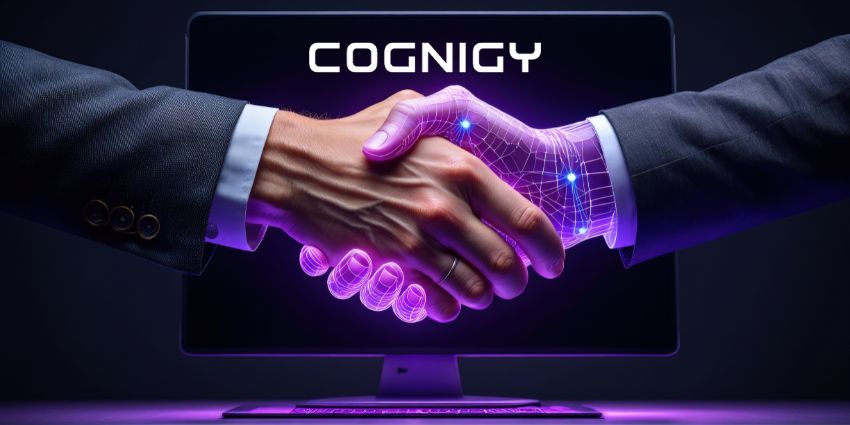When remote working came to the fore in 2020, many contact centers – particularly in the U.S. – started to give employees Chromebooks to work from.
Why? Because a Chromebook has many advantages for contact centers, including price, speed to deployment, and built-in security.
Here, Chrome sensed an opportunity. As Matt Bottomley, Partner Sales Engineer at Google, told us:
Because of the web-based nature of it all, there is no update period time. Applications are always compatible with the version of OS you run. That means we never have downtime or unproductive periods, and that has really resonated in contact center environments, where every minute counts.
Having this leg-up, Chrome considered how it could drive extra value for its contact center customers – beyond what their vendors offer.
As such, Chrome set up an entire team dedicated to building contact center-specific functionality within the OS – targeting value-add opportunities.
Now, it is starting to release innovations that catch the eye.
What Has Chrome Already Released for the Contact Center?
Last month, the hard work of the contact center-focused Chrome team started to bear fruit, releasing the ChromeOS Desk Connector.
While many operating systems – including Mac and Windows – have multiple desk options, this innovation uniquely links desks on Chrome to IVR inputs through an API.
After recognizing customer intent, the innovation makes a specific desk layout appear on the agent’s screen, customized to open every application the agent needs to handle that conversation.
Such an offering provides an attractive alternative to the “single pane of glass” approach, which contact centers so often struggle to achieve.
The innovation is compatible with Genesys, NICE, and many more prominent communications solutions. Indeed, the video demo below shows how it works in a RingCentral environment.
Yet, this is just the start. “We got a lot of innovations coming,” promised Bottomley.
What Is On the Contact Center Roadmap for Chrome?
In the near future, Chrome has told us that it will debut new screen recording and reporting capabilities, with the latter aiming to add value to similar solutions from CCaaS vendors.
Here, Chrome is targeting a gap in cradle-to-grave telemetry capabilities. Indeed, while conversational analytics lifts additional insight, more general reporting tools do little to help businesses uncover the reasons for bad feedback or dropouts.
As such, Chrome senses the opportunity for innovation. Bottomley stated:
ChromeOS is introducing end-point based telemetry APIs, which will pop directly into existing CCaaS platforms reporting software.
“[This will cover] everything from: How strong is the WiFi? What headset have they got plugged in? Is their headset running an old driver that is no longer supported? Are they running too many apps and slowing down their computer?”
With this information, contact centers gain more insight into an agent’s working environment and act to improve both their experience and that of the customers they talk to.
Screen recording is also helpful in adding context to an agent’s performance. Maybe they’re using workarounds that go against best practice? Such an API could uncover this and reinforce particular parts of their coaching to enable those all-important experience enhancements.
A Two-Pronged Attack on CCaaS
Google has created ripples in the contact center market through its Chromebook and additional targeted innovations. Yet, Chrome is not its only venture in the space.
Indeed, the vendor has also launched a CCaaS solution – the Google Contact Center AI platform – built in partnership with UJET – a more seasoned contact center provider.
As such, Google has taken a two-pronged attack on the contact center market.
Over the past couple of months, this approach has taken shape fast, with Google already working on commercial CCaaS deployments and Chrome launching its first innovations.
These are promising signs after some had questioned Google’s intent in CCaaS. Indeed, less than two months ago, I wrote an article begging the question: Will Google compete in CCaaS?
The question seemed fair at the time. After all, consider its ventures into UCaaS.
Some of the best analysts in enterprise communications predicted that Google would make a real go of that year after year. Yet, its efforts petered out.
Then, look at the Google Apps suite, Mail, Chat… It is rare for bigger businesses to harness these tools. Often, it’s just those that despise Microsoft.
Nevertheless, its recent movements suggest that its CCaaS efforts may follow a different path – especially if this two-pronged approach gains momentum.
Google has all the resources to make this happen. Yet, through Chrome, it can also offer innovations that others in the space – barring Microsoft – simply can’t.
Its ChromeOS Desk Connector gave us a taste of this, and the prospect of future releases solving more pressing contact center problems is exciting.







